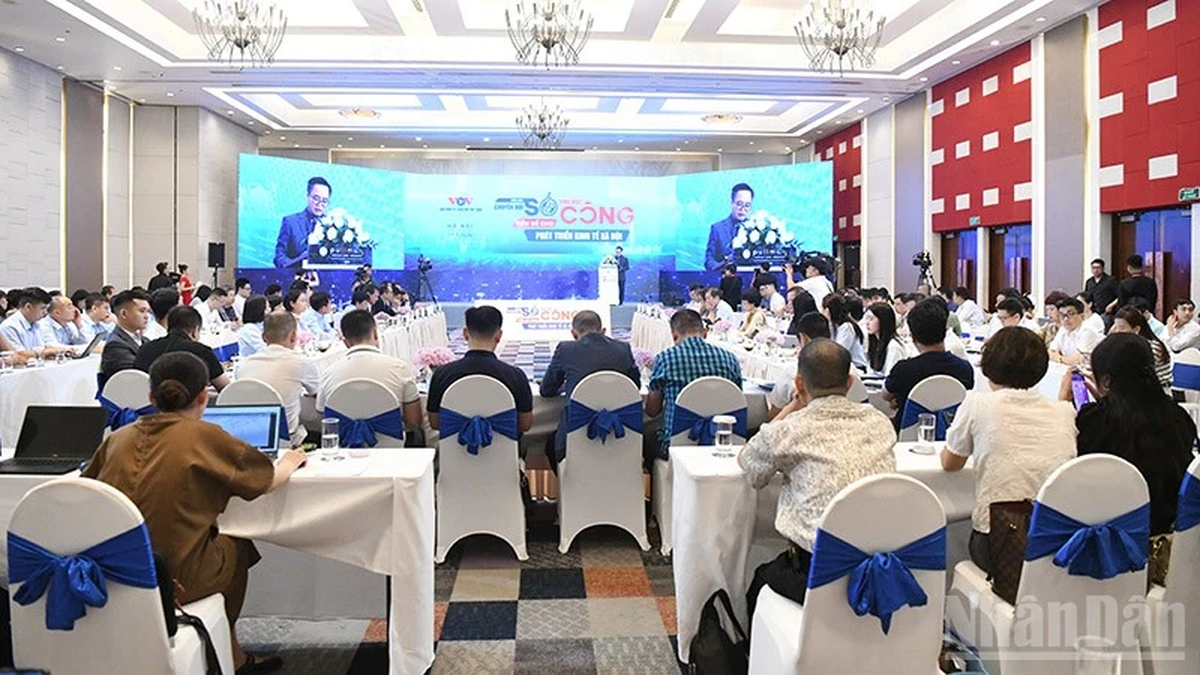Before the “removal of the valve”, after many years of maintaining the credit limit ceiling mechanism, creating the premise for banks to operate according to the market mechanism. Capital flows are expected to move more flexibly to key economic areas, so which sectors will become the “magnets” to attract capital when the credit room is eliminated?
Prioritize capital for sustainable production - trade - consumption
In the new wave of capital after the room is removed, with banking as the starting point, real estate will be the clear beneficiary, fintech is the driving force for innovation, and production - export - agriculture - industry will be the place to create real value.
Instead of the previous “ask-give” mechanism, credit granting will now depend on risk management capacity, the ability to meet capital safety ratios and transparency in the operations of each credit institution. Capital flows are therefore expected to move more flexibly to key economic areas, helping to restructure the economy in an effective and practical direction. According to Vietstock experts, “After removing the room, capital flows need to be prioritized to flow into the fields of production, trade and sustainable consumption. The previous credit room helped avoid capital flows into speculative fields, focusing on supporting the real economy.”

Accordingly, the credit flow will be liberalized, the elimination of credit room will help banks no longer depend on the annual allocation limit from the State Bank. This brings high flexibility, helping banks proactively invest capital into potential customer segments, while optimizing profit margins through a more reasonable credit structure. In particular, banks with a solid management foundation such as Vietcombank, BIDV , Techcombank, HDBank, ... will have a clear competitive advantage when accessing and allocating capital effectively.
At the same time, along with removing the credit room, the expansion of the foreign ownership room to 49% in the banking sector creates a “double push” to help FDI and FII capital flow strongly into this industry. Foreign strategic investors will have the opportunity to participate in the restructuring, digital transformation, and credit growth of domestic banks.
In addition, the removal of the credit room has opened up capital flows into real estate. With outstanding debt accounting for nearly 20% of the total outstanding debt of the system, real estate is a sector that is clearly affected by the room mechanism. Although capital is still available, it is only for projects with full legal status and good liquidity, not for speculation. In particular, more focus will be placed on the affordable housing and social housing segments - where there is real demand and good liquidity. Thanks to that, the dream of owning a house for middle-income workers will become easier.
However, experts also warn that capital flows into real estate must be accompanied by risk control. Projects lacking legal status, weak investor capacity, or speculative projects will be removed from the credit list.
Comments from the Ho Chi Minh City Real Estate Association also warn that even if the room is loosened, banks will still find it difficult to loosen real estate lending criteria. Capital flows will likely be transferred to less risky sectors. Sharing the same view, Dr. Dinh The Hien also said: "Bank capital accounts for 70% of the value of the real estate industry" but this capital flow mostly comes from speculative projects. Even if the room is removed, banks will still limit credit to risky projects.
However, according to experts and observers, after the credit room is removed, cash flow will flow strongly into essential production and business sectors, supporting the investment, consumption and production cycles of the economy. Previously, small and medium-sized enterprises in the processing, supporting industries and high-tech agriculture sectors often had difficulty accessing loans because banks prioritized low-risk customers.

The removal of the credit room opens up opportunities for capital to flow into manufacturing sectors, which are the foundation for creating added value for the economy. In particular, export sectors such as textiles, footwear, seafood, and electronics will have more financial resources to reinvest, expand scale, and improve competitiveness.
Dr. Le Dat Chi (Head of Finance Department - UEH): Eliminating the room will help reduce administrative procedures, creating conditions for strong credit flow into essential production and business sectors. At the same time, to avoid bad debt, banks will have to improve their appraisal capacity and apply indirect tools such as interest rates and required reserves.
Leaders of banks such as VietinBank, HDBank, VIB, BIDV, also agreed that credit will continue to focus on manufacturing enterprises, supporting the investment - consumption - production cycle of the economy.
High-tech agriculture will be a major capital-attracting sector in the coming time, when banks have the right to make their own decisions, and businesses operating systematically in smart agriculture, clean value chains, organic products, traceability, sustainable agriculture, and circular agriculture will have easier access to capital. This is the right direction to help Vietnam develop sustainable agriculture and increase the export value of agricultural products. Agribank or VietinBank are typical examples of "unblocking" capital flows for agriculture, lending to the value chain from production to export, especially supporting the restructuring of agriculture.
Not only that, the recovery of the construction materials, mechanical engineering, and industrial park industries will also be triggered by credit flows into public investment and strategic infrastructure projects.
New impetus for the economy - but must be closely controlled
Capital flows after the elimination of credit room need to be tightly managed and closely controlled. Governor of the State Bank - Nguyen Thi Hong and organizations such as IMF, WB, Moody's all warned: Eliminating room must go hand in hand with tools to control inflation, liquidity and strictly handle bad debt to ensure system stability. According to Governor of the State Bank - Nguyen Thi Hong, capital flows are still mainly from banks, so eliminating room must be appropriate to the stage, avoiding causing macroeconomic imbalance.
If the room is removed immediately without good control tools, capital may flow into real estate in the bank's "backyard", causing illiquidity and increasing inflation. Faced with these risks, banks in the system need to quickly complete the internal credit rating system, control bad debt, and improve monitoring capacity to allocate capital effectively and avoid systemic risks.
Dr. Le Duy Binh (Director of Economica Vietnam) warned that Vietnam's credit/GDP has reached 134%, if the room is removed hastily, it could lead to hot credit growth and high bad debt. He affirmed that it is necessary to monitor with indicators such as CAR, asset quality, and required reserves. Meanwhile, Associate Professor Dr. Nguyen Huu Huan (UEH) said that a roadmap is needed, combining credit rooms and market tools in parallel, only granting autonomy to banks that meet the safety criteria.
VietinBank leaders emphasized that the room removal mechanism, along with the application of Basel III and international risk management standards, helps the bank proactively lend to high-value areas such as digital technology, fintech, and creative manufacturing.
The abolition of the credit room mechanism is not simply a change in management policy, but also a turning point in the way the Vietnamese financial system operates. When given autonomy, banks will have to change their thinking, strengthen their risk management capacity and proactively seek potential areas to allocate capital more effectively.
Capital flows after “room removal” will no longer be constrained by administrative limits, but will shift strongly to areas with high spillover potential such as production and business, high-tech agriculture, export industry, fintech, and infrastructure. However, freedom comes with responsibility: if not controlled, credit can turn into a “double-edged sword”.
In the context of Vietnam moving towards the goal of sustainable development and deep integration, “unleashing” capital flows is a necessary step to promote investment, increase internal strength and improve productivity of the entire economy. This is not only an opportunity for the banking industry, but also a great driving force for the business community and the strong recovery of the Vietnamese economy in the new period./.
Source: https://baolamdong.vn/linh-vuc-nao-se-hut-von-sau-bo-room-tin-dung-382586.html




































































































Comment (0)